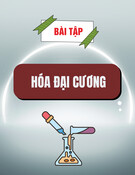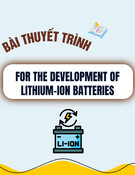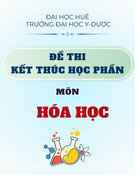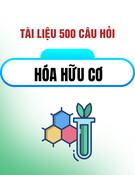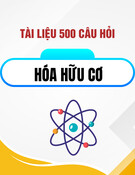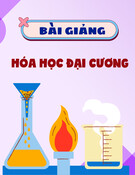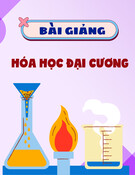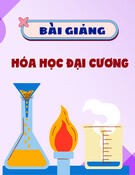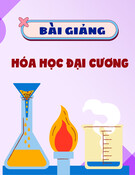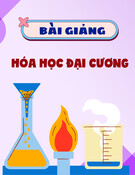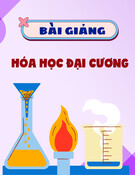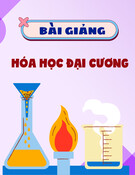
170
HNUE JOURNAL OF SCIENCE
Educational Sciences 2024, Volume 69, Issue 4, pp. 170-182
This paper is available online at http://hnuejs.edu.vn/es
DOI: 10.18173/2354-1075.2024-0074
DEVELOPING AUGMENTED REALITY CLASSROOM USING TPACK MODEL
FOR TEACHING GENERAL CHEMISTRY IN HIGH SCHOOLS
Nguyen Mau Duc1,*, Nguyen Vinh Quang2, Nguyen Hoang Kien2,
Cao Thi Van Giang2, Ngo Gia Khanh2 and Le Thi My Quyen3
1Faculty of Chemistry, Hanoi National University of Education, Hanoi city, Vietnam
2Students of the Faculty of Chemistry, Hanoi National University of Education,
Hanoi city, Vietnam
3Nam My Primary-Secondary-High School, Ho Chi Minh city, Vietnam
*Corresponding author: Nguyen Mau Duc, e-mail: nmduc@hnue.edu.vn
Received July 5, 2024. Revised July 31, 2024. Accepted September 27, 2024.
Abstract. In the digital transformation era, the integration of Information Technology in
education is pivotal. Augmented Reality (AR), with its capacity to visualize abstract
concepts, is increasingly recognized as a valuable tool in Chemistry education. The abstract
nature of general Chemistry content, like the visualization of atoms and molecules, poses
significant comprehension challenges for high school students. This study aims to investigate
the effectiveness of AR in enhancing the understanding of general Chemistry among high
school students using the Technological Pedagogical Content Knowledge (TPACK) model.
The research data included 90 high school chemistry teachers from high schools in four
northern provinces, collected through classroom observations and surveys using a 5-point
Likert scale; the data were analyzed using both descriptive and inferential statistics. The
findings indicate significant improvements in students' understanding of Chemistry when
taught using AR-integrated lessons designed with the TPACK model. Students demonstrated
enhanced engagement, better conceptual grasp, and increased satisfaction with the learning
process. AR technology, when integrated with the TPACK framework, substantially
enhances the learning of general Chemistry in high schools. This study supports the broader
application of AR in educational settings to improve the effectiveness of teaching and
learning processes.
Keywords: augmented reality, TPACK model, chemistry education, general chemistry, high school.
1. Introduction
The application of Information Technology in education has become an undeniable trend in
the current era of digital transformation [1]. This is particularly important because relying solely
on available textbooks may lead to the omission of significant content [2]. The application of
Augmented Reality (AR) technology, with its numerous advantages, has proven its value,
especially in the field of Chemistry Education [3].
For topics covered in the general Chemistry curriculum of the 2018 Education program, a
majority of the content is abstract in nature. Many of the objects and phenomena described within
the general Chemistry curriculum are not visible to the naked eye, making it challenging for

Developing augmented reality classroom using TPACK model for teaching general chemistry in high schools
171
students to visualize and comprehend during the learning process [4]. Concepts such as atoms,
molecules, electron orbitals, and chemical bonds remain abstract when students rely solely on
textbook images. This presents a major difficulty when approaching the general Chemistry
curriculum and is a reason why many students are hesitant to engage in and study Chemistry.
Therefore, the application of Information Technology following the TPACK model can make
Chemistry more accessible and vivid, thereby enhancing the interest and active participation of
high school students in the subject [5].
In this context, the emergence of AR partly addresses the aforementioned challenges due to
its outstanding advantages. AR supplements real-world environments by incorporating additional
details to enhance students' learning experiences [6]. The 3D virtual environment stimulates a
more visual and dynamic approach to learning Chemistry. AR utilizes interactive features that
allow students to manipulate objects by zooming in and out, rotating objects, and programming
objects to conduct experiments following predefined procedures. As a result, AR is widely
adopted in various domains of life. In education, AR is often applied during the teaching process
to facilitate students' exploration of knowledge, enhance spatial imagination, improve
concentration, and provide a visual representation of abstract concepts. AR-based learning
products create an extremely engaging learning environment [7]. However, AR and virtual reality
products are not yet widely prevalent in Vietnam.
Therefore, it is highly necessary to conduct research on the application of AR in Chemistry
education. In this study, the research team has designed AR-integrated lessons for the general
Chemistry curriculum following the TPACK model, aiming to provide students with an exciting
learning environment and enhance their enthusiasm for learning [8]. These findings serve as a
basis for proposing measures to develop students' qualities and competencies in accordance with
the new General Education program [7].
2. Content
2.1. Research methods
* Research design
This scientific study investigates the use of augmented reality technology, interactions, and
the teaching of general chemistry in high school through the Technological Pedagogical Content
Knowledge (TPACK) model. Research objectives of the study include investigation of the effect
of the AR technology integration on students' general chemistry understanding, the impact of the
TPACK model on the effective integration of AR in chemistry instruction, and the physical and
mental experiences during the learning of chemistry using the AR. The data were collected
through classroom observation, surveys, and interviews. Quantitative data were described and
inferred using descriptive and inferential statistics, while qualitative data were broken down into
thematic analyses. Ethical issues will be taken into account: informed consent as well as
confidentiality and privacy of the individuals. The limitations of the study include the context-
specific manner and the potential challenges the availability of AR technology may pose. The
research design intends to add to the grasp of AR and the TPACK model on teaching and learning
general chemistry in high school, leading to the enrichment of the practices in the field and the
shaping of the curriculum as well.
* Participants
The research timeline of the study is from October 2023 to April 2024. The current scientific
exploration studies 90 high school teachers. The survey was conducted in Ha Noi, Nghe An, Ha
Nam, and Thai Nguyen, which were representative educational sites in Vietnam. Teachers were
selected strictly based on their knowledge of chemistry, ensuring that they could share beneficial

Nguyen MD*, Nguyen VQ, Nguyen HK, Cao TVG, Ngo GK & Le TMD
172
experiences with the combination of augmented reality and the TPACK model. Teachers and
students were active members engaged in better understanding how learning is affected by the
application of AR technology and how it, in turn, affects instructional strategies and outcomes. A
questionnaire was used to gather quantitative information about participants' characteristics, prior
involvement with AR, their comfort level with educational technology, and their perceptions of
the impact of AR in improving their comprehension of chemistry concepts in general. The
participation of teachers from various locations enhanced the appreciation of this approach and
the identification of potential challenges that may arise when using AR and the TPACK model in
high school.
* Data collection instruments and data analysis
The data were collected through the online survey with a set of criteria. The sentence items
were formulated using five-point Likert scale closed-ended questions ranging from 'Strongly
Disagree’ to 'Strongly Agree’. The questionnaire was run for teachers and a total of 90 samples
were collected. Descriptive analysis of all quantitative data was performed using the Statistical
Package for the Social Sciences (SPSS) software program (version 27.0). Descriptive statistical
analysis was conducted to calculate Cronbach's alpha (CA), Mean (M), Standard Deviations (SD),
Exploratory factor analysis (EFA), and ANOVA for each item, assessing their respective levels.
2.2. Augmented reality in education
Augmented reality is the integration of digital information with the user's environment in
Real Time. Unlike virtual reality, which creates an artificial environment, AR users experience a
real-world environment with generated perceptual information overlaid on top of it [9]. Augmented
reality is used to either visually change natural environments in some way or to provide additional
information to users. The primary benefit of AR is that it manages to blend digital and three-
dimensional (3D) components with an individual's perception of the real world [10]. AR has a variety
of uses, from helping in decision-making to entertainment [11].
AR delivers visual elements, sound, and other sensory information to the user through a
device like a smartphone or glasses [12]. This information is overlaid onto the device to create an
interwoven experience where digital information alters the user's perception of the real world.
The overlaid information can be added to an environment or mask part of the natural environment.
Recent studies show that augmented reality is becoming more and more popular, benefiting
various industries and it has been proven to have huge opportunities in the field of education. In
2013, Di Serio, Ibáñez, and Kloos conducted a comparative study and they found that the level of
concentration and satisfaction of students in learning environments with augmented reality
applications was higher than in learning with slides [13].
The AR experience is thriving as a significant trend, and it is estimated that by 2023 there
will be 2.4 billion augmented reality mobile users worldwide [14]. However, there were only 200
million users in 2015. It is an excellent influx in numbers that can't be ignored. However, it is
about the staggering number that is looming around the usage of augmented reality in education
and eLearning applications. Many people are only aware of augmented reality being used in
mobile games like Pokémon Go which went viral in 2016 all over the globe and social media
platforms like Snapchat. However, education is another significant space where this technology
can blow up the candles.
Another aspect of the AR experience is that it includes 25% digital reality and 75% existing
reality. It means it doesn't replace the complete environment with the virtual; rather, it integrates
virtual objects into the real world.

Developing augmented reality classroom using TPACK model for teaching general chemistry in high schools
173
With AR, classroom education can be extraordinary and more interactive, as AR can enable
teachers to show virtual examples of concepts and add gaming elements to provide textbook
material support. This will enable students to learn faster and memorize information.
2.3. TPACK model
TPACK stands for "Technological pedagogical and content knowledge". The TPACK model
is a theoretical framework that emphasizes the integration of technology, teaching, and content
knowledge in educational environments. It is used to guide the effective integration of technology
into teaching and learning methods. This framework recognizes that effective teaching with
technology requires an understanding of the interaction between these three elements: technology
(T), pedagogy (P), and content (C). The TPACK framework combines and rearranges the three
types of knowledge - TK, PK, and CK - in various ways. (TPK) focuses on the connections and
interactions between technological tools and pedagogical practices, (PCK) focuses on the
connections between pedagogical practices and specific learning objectives, and (TCK) focuses
on the relationships and intersections between technologies and learning objectives [15]. These
interrelated areas form the TPACK framework, which recognizes the interplay among all three
areas and acknowledges that educators operate within this intricate space.
With TPACK, teachers not only possess subject matter knowledge in Chemistry but also
understand how to teach and use technology in the process of knowledge transmission. The
TPACK model allows teachers to effectively utilize technology to convey Chemistry knowledge
to students. By integrating subject matter knowledge in Chemistry, pedagogical knowledge, and
technological knowledge, teachers can design and implement creative and interactive learning
activities. Technology enhances student engagement and understanding while providing
opportunities for them to apply Chemistry knowledge in practical contexts.
In this paper, we have included the TPACK model as the main framework to introduce AR
into teaching with three fundamental elements: content, pedagogy, and technology, as well as the
interconnections and interactions among them. Teaching with technology is difficult to do well.
The TPACK framework suggests that content, pedagogy, technology, and teaching/learning
contexts have roles to play individually and together. We believe that it is the foundation to
effectively apply technology to teaching. Teaching successfully with technology requires
continually creating, maintaining, and re-establishing a dynamic equilibrium among them. These
core elements will be briefly summarized in the following section:
Content Knowledge
Teachers need to understand and master knowledge of chemical structures, chemical
formulas, chemical reactions, etc. They must know how to design AR products to visualize
chemical bonds, experiments, and more. This specialized knowledge is necessary to explain and
guide students in using the products correctly.
Pedagogical Knowledge
Teachers need to have knowledge of appropriate teaching methods to use software in
teaching Chemistry. They can design activities such as visual lectures, practice drawing chemical
bonds, and solve exercises related to the lesson. Teaching knowledge helps teachers create an
interactive and engaging learning environment for students so that they can absorb knowledge
most effectively.
Technological Knowledge
Teachers need to know how to use and exploit the features of Cospaces Edu software. This
technological knowledge helps teachers take full advantage of the potential of Cospaces Edu
software and create rich and diverse learning activities.

Nguyen MD*, Nguyen VQ, Nguyen HK, Cao TVG, Ngo GK & Le TMD
174
2.4. Designing and using augmented reality technology applying the TPACK model
to students in teaching chemistry
2.4.1. Design principles
To apply AR in teaching chemistry effectively, when designing products using augmented
reality, we must research based on proposed theories and practical knowledge. When designing
an AR product, it is necessary to ensure the following goals: knowledge, skills, attitudes and
capacity development orientation. When designing products using AR, you need to ensure the
following principles:
Figure 1. AR design principles in education (Source: own author)
2.4.2. Design process
Figure 2. AR product design process in teaching chemistry (Source: own author)
Step 1: Determine the target
This is the most important step in the process, guiding the steps that follow. In this step,
teachers need to identify the requirements and goals to be achieved for the product. Analyze the
content and nature of things and phenomena.
Step 2: Create an outline
Based on the set goals, teachers plan the content, form, and organization of teaching activities
using AR products, through which teachers can choose appropriate design tools and find resources
to implement teaching ideas.
Step 3: Create the content
Based on the scenario and the resources found, the teacher builds detailed content for the AR
product. Content includes quotes, information, images, models, questions, order of appearance,
and how to set up effects between parts of content.
Step 4: Artistic design
The teacher uses the selected design tool, inserts the built content into the AR product, and
adjusts the objects in the product in terms of color, size, layout, and font style to harmonize.
spectacular. Then set effects for objects according to the proposed ideas.





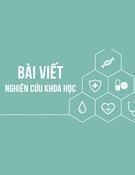





![Đề thi kết thúc học phần Nguyên lí Hóa học 2 [mới nhất]](https://cdn.tailieu.vn/images/document/thumbnail/2025/20251014/anhinhduyet000/135x160/69761760428591.jpg)
